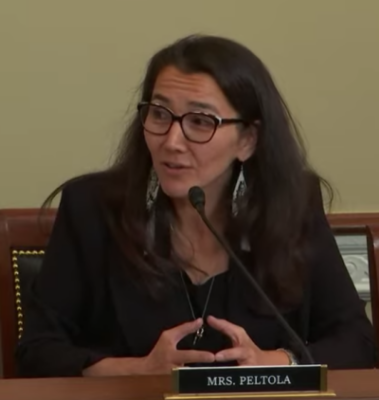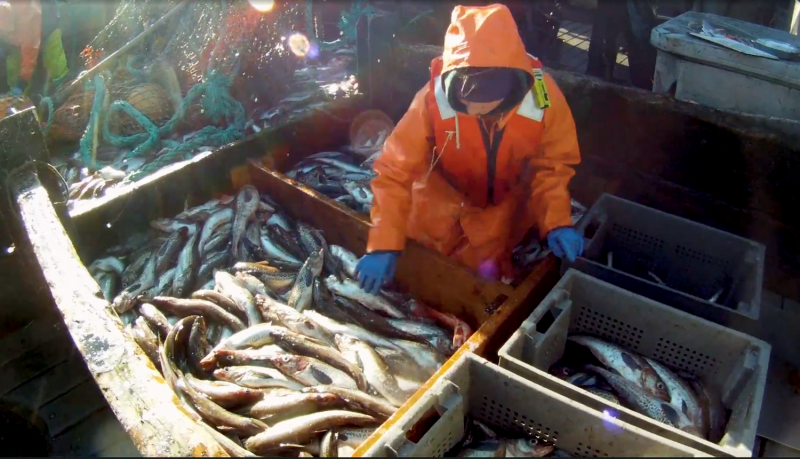Amid widespread consternation about the incidental numbers of halibut, crab, salmon and other species that trawlers haul up in the Bering Sea, state and federal management regimes have come under increasing fire.
To some, inaction by the North Pacific Fishery Management Council to impose trawl bycatch caps on salmon and crab demands an overhaul of the 11-member panel that votes on management strategies submitted to the Department of Commerce.
One side of the argument has long held that the NPFMC has been corrupt since its inception as part of the Magnuson-Stevens Fishery Conservation and Management Act of 1976 (MSFCMA ).
“That whole thing has stunk to high heaven from its beginning,” says Donald Mitchell, an Anchorage attorney and author of numerous books on Alaska Native issues. “There are people in the context who should be in jail.”
David Bayes, a charter boat operator out of Homer and the Facebook administrator of STOP Trawling Now, says that it wasn’t the original plan of the council’s founders to stack the panels with members whose conflicts of interest could undermine other facets of fishery management. But he adds that it evolved quickly as various sectors in the industry scrambled for representation and votes in key fisheries issues.
“If one looks back at the verbiage and intent when the regional councils were formed through the Magnuson-Stevens Act, one sees that lawmakers at the time had the forward thinking to realize that in order for dynamic and ever-changing fisheries to be regulated, they would need to be regulated by the fishermen themselves.”
Bayes adds that conflict of interest was acceptable at the time the councils were founded, “because that was the only way to have fishermen regulating fishermen.”
But competition for representation among Alaska, Washington and Oregon, and conflicts among gear types quickly changed who was placed in the seats and left the fishermen behind.
“They’re bringing the heaviest hitters they can find, which are often government officials, CEO’s, lobbyists, lawyers, ex-political staff, etcetera,” says Bayes.
Others critical of the council conflicts prescribe replacing members who hold particular economic interests in the fisheries, with members steeped in the objective guise of science and resource conservation. Ratifying the council composition of its members at the federal level, however, could entail stripping the Magnuson-Stevens law down to its bare bones and rebuilding it again.
Not that somebody isn’t trying.
Rep. Mary Peltola, D-Alaska, who also chairs the House of Representatives Natural Resource Committee, petitioned through a bill in Congress to add two more voting members to the panel. They would represent smaller local fisheries and villages dependent upon subsistence fishing. The bill failed in Congress, however, and efforts to rejuvenate it or another like it may die a sudden death due to the partisan climate.
“Every time Magnuson-Stevens has been reauthorized it has been a bipartisan effort,” says Peltola, “and I’m hopeful it will be again this time around.

Mitchell wrote an editorial in the Anchorage Daily News with the suggestion that if Peltola and others fail to reauthorize Magnuson-Stevens at the federal level, legislative action within the state might circumvent the conflict of interest problem by divesting the governor’s power to recommend future council members to the secretary of Commerce.
But in an interview, Mitchell proposed an even simpler solution.
“Off the top of my noggin I don’t think there’s any legal impediment for the secretary to basically say to the governor, ‘I’m not going to accept any names sent to me with a conflict of interest.’”
Likewise, Peltola has explored similar options.
“NOAA can do a lot more, state governors can use their authority to select representatives for the North Pacific Fisheries Management Council to put more under-represented groups on the council,” she says, “And there are a variety of other bills that could make incremental improvements to our fishery management system, short of a full blown MSA reauthorization.”
Neither approach, federal or state, would achieve the speed at which folks from nearly every side of the industry want solutions to the bycatch problem. Decades ago, conflict of interest and its power in compromising fishery sustainability came under scrutiny of the public, and was illuminated in a scientific journal which studied the makeup of the eight regional councils over a period of 12 years.
Thomas Okey questioned this in a paper he wrote in the May 2003 issue of Marine Policy. There he noted that 49 percent of members in the eight councils were comprised of commercial fishing interests with recreational fishing representation coming in at 33 percent.
“Given the notion that institutionalized favoritism in decision making is the fundamental cause of fisheries overexploitation (and related degradation of marine ecosystems), rigorous independent audits and the composition and organizational structures of the federal fishery management systems in the US are warranted, especially in light of the current fishery crisis,” he wrote.
However, many in the industry worry that diluting the panel with more objective interests would jeopardize the magnitude of the economic impacts imposed on specific sectors of the trawl and other groundfish fleets by their decisions.
“Fisherman and fishing representatives bring critical on-the-water experience and detailed knowledge of the fisheries into the deliberations,” says David Witherell, executive director of the North Pacific council, in Anchorage. “Predicting how a captain, company, or sector might respond to a proposed regulatory change – which is critical to understanding the environmental, social, and economic impacts and development of efficient and effective regulations (including those that accommodate concerns about safety at sea) – cannot be answered with any amount of peer-reviewed science.”
Other language from hearings addressing the conflict of interest when the Magnuson-Stevens act was reauthorized in 1994, likens having industry representation on the eight fishery management panels to the parental involvement in local Parent Teacher Associations across the country.
“When Congress created the Regional Fishery Management Councils under the Magnuson Act, it was felt that user groups with an interest in the resource would act in a manner which would protect that resource and ensure the future health of our fisheries,” wrote then-New York representative Thomas Manton, who chaired the House Subcommittee on Fisheries Management at the time.
Another complicating issue is that many of Alaska’s salmon-dependent communities are also invested in the pollock industry via the purchase of catch shares and the ownership of trawlers.
In 1992, Congress created the Community Development Quota program which initially awarded 7.5 percent (and eventually 10 percent) of the pollock harvest to 65 communities based upon the criterion that they lay within 50 miles of the Bering Sea coast and that at least 50 percent of residents relied upon commercial or subsistence salmon fishing to meet their needs.
Based on demographics those communities were organized into six regional non-profit organizations and were allowed to form for-profit subsidiaries – an option that provided flexibility in a wide range of ventures including entry to Bering Sea fisheries, housing improvements, measures to reduce poverty and provide other benefits, such as college scholarships.
On the island of Saint Paul the single community formed the Central Bering Sea Fishermen’s Association (CBSFA), a CDQ group which owns three vessels and shares on four other vessels. In the decade from 2007-2017, the corporation paid out more than $23 million in contributions to local programs and infrastructure investments, which included money for the city, the local school district, the tribal government and other infrastructure developments.
Another group, Coastal Villages Regional Fund, hit $54.4 million with net profits of $2.3 million and net assets of owns assets in the neighborhood of $274 million, including five trawling vessels. Proceeds from pollock, cod and crab contribute about $30 million to 20 communities and their 9,300 residents each year.
In the present North Pacific council structure, CDQ groups are represented by two voting members. On March 15, Gov. Dunleavy named three appointees to the secretary. Among candidates Tyuichi “Rudy” Tsukada, Samuel Rabung and Tom Taube, Dunleavy chose Tsukada as his favorite. Present member, Simon Kinneen will term out, and Tsukada will likely replace him to maintain two CDQ seats on the council.
What would become of the revenues for the villages could be devastating with a total shutdown of the trawl fisheries, but Peltola sees middle ground in the process of eliminating bycatch, yet prosecuting the fisheries.
“I believe we can see significant improvements without a complete shutdown,” says Peltola. “We have seen some progress, just not at a pace that keeps up with the changing oceans and stressed fish populations. Of course, there would be a huge impact to CDQs if trawl fishing was completely shut down, as it is a major revenue stream.
"The specific impacts would be different for every village because each CDQ maintains different programs to fit their communities. This is why we need a holistic approach to managing our oceans that does not rely on a single policy solution.”








